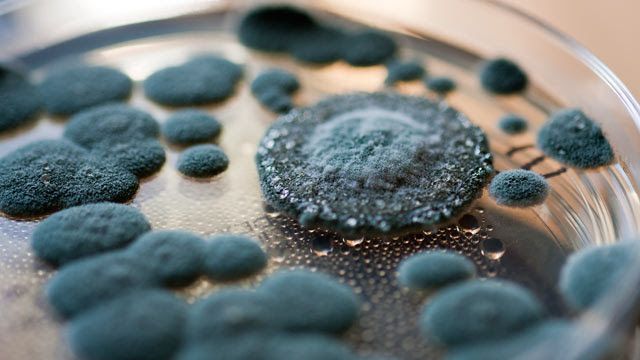Don’t Mold it Against Me

If you struggle with basement mold, you are not alone. It’s a common problem in many homes, particularly those with damp, dark basements—conditions which turn your basement into the promised land for mold and mildew. And once it starts to grow, it can be difficult to get rid of. As always a its easier with the right information…
Mold is part of the fungi family, just like mushrooms. Except unlike the mushrooms you buy at the grocery store, mold can pose serious health risks to humans with prolonged exposure or inhalation of spores. Symptoms can be as innocuous as coughing and congestion or as serious as asthma, infections, rashes, and allergies. By far the best approach to dealing with mold is to prevent its growth by strictly controlling humidity and moisture, however once present one must cut through their stain to restore a clean surface first.
Here’s how to keep your basement mold-free:
Monitor humidity levels
Mold loves dark and humidity, specifically levels of 45 percent and above are considered high enough to be conducive for mold growth. Make sure the humidity in your basement is well below these levels with the use of hydrometer. This little device will help you assess how your strategies to reduce moisture are doing, or said another way it will predict the winner of this battle.
Buy a dehumidifier
If you notice the humidity levels are too high, start with an investment into a dehumidifier. This device condenses water out of the air into a container that allows you to simply pour it down the drain. Growing up we had a wood paneled basement from which we poured off almost 20 gallons a month. Your biggest issue will simply be to remember to empty the unit. Your hydrometer will help here again. If you are back over 45 the dehumidifier is likely full again. This is a low-stress way to deal with humidity that can help prevent mold from growing or returning.
Increase airflow
Mold loves stagnant air with damp conditions so another good way to eliminate its growth is to provide adequate airflow throughout your space. This helps to dry out pockets of wet air or sitting water, cutting off mold’s food supply. Once air is saturated moisture as now where to go but to settle out onto your surfaces effectively watering your mold. Increasing the air flow does not necessarily mean adding a fan, but rather changing out the air. This means drawing in fresh air and expelling the moist air. This is what you are doing when you turn on your exhaust fan in the bathroom to draw off the post-shower moist air.
Clean spills or leaks immediately
Letting water or spills sit is one quick way to encourage mold growth. It does not take long. I once had a gallon of water lose a top and fall over in the back seat foot area of my car. Within a day the it reaked of mold. My mistake? Not botting up the excess water with a towel before opening the windows to air the car out. Get rid of the liquid water if you have a spill or a leak is your first step to preventing mold getting started. If you notice any issues with leaks or spills, clean and dry the area immediately with a mold stain cleaner like our MARBLELIFE Mold & Mildew Stain Remover. You can also use a dehumidifier or space heater to dry out the area.
Insulate water pipes
Cold water pipes in basements can accumulate condensation on their exteriors. This occurs for the same reason your dehumidifier works as moisture condenses out of the air along the cooler pipe surface. By insulating these pipes you reduce the potential drips and concentrations of liquid water in these areas, reducing the creation of a mold friendly local environment. You can get the entire basement or shower moisture level under a 45% average, but if any area is high enough to condense on the pipes we have still created a micro-friendly environment in this area.
When it comes to mold, prevention is the best policy. By making sure your basement is not providing the necessary conditions for mold growth you’re saving yourself a lot of hassle. However, if mold does make an appearance, know that it can effectively be removed by using the right techniques matched with the right products.
For any other mold remediation tips or questions, be sure to contact your local water restoration company. To clean-up those mold stains start with MARBLELIFE Mold & Mildew Stain Remover. This is what our professional teams employ whenever they encounter mold during their tile, marble or other hard surface restoration. We have to get to the surface in order to restore it. This gets us their quickly, safely and efficiently.